Our perceptual experiences are created by our brains and do not necessarily correspond to the physical properties of the world. To clarify the mechanisms by which the human brain generates perceptual experiences, Hayashi Laboratory in the Center for Information and Neural Networks (CiNet) studies human brains using psychophysics and functional brain imaging techniques. Furthermore, we are trying to clarify the causal relationship between the brain and perception by investigating how the perceptual experience changes when magnetic or electric current stimulation is applied to the brain. Our goal is to apply the findings from these studies to develop technologies that allow us to control our subjective senses at will and to create new perceptual experiences that we have never experienced before.
NEWS
- UPCOMING
EVENTS -
- Hayashi will give a talk at the Advanced Neuroimaging Center, National Institutes for Quantum Science and Technology (Feb 18, 2026).
- Nov 29, 2025
- Kanechi and Sakamoto presented their posters at The 44th Annual Meeting of the Japanese Psychonomic Society. Kanechi won the Best Presentation Award. Congratulations!
- Nov 16, 2025
- Our new preprint, entitled “Transcranial static magnetic stimulation dissociates the causal roles of the parietal cortex in spatial and temporal processing”, was posted on bioRxiv.
- Nov 3, 2025
- Our new preprint, entitled “Contextual scaling of representational uncertainty for size and number”, was posted on bioRxiv.
- Nov 1, 2025
- Sofia NAGISA joined our team as a Fixed-term Researcher. Welcome!
- Oct 18, 2025
- Maurya presented his research findings at the TRF4.
- Sep 30, 2025
- Kanechi was accepted to be funded for JSPS Research Fellowships for Young Scientists (DC2).
- Aug 27, 2025
- Sakamoto presented his research findings at the ECVP2025.
- Jul 3, 2025
- Keiko SAWAI joined our team as an Administrative Specialist. Welcome!
- Apr 1, 2025
- Naoya SUGIMOTO (The University of Osaka) joined our team as a Cooperative Visiting Researcher. Welcome!
- Mar 25, 2025
- Sakamoto received their masters degree from The University of Osaka.
- Mar 20, 2025
- Hayashi gave a talk at Scuola Internazionale Superiore di Studi Avanzati(SISSA).
- Feb 3, 2025
- Ken ISOSAKI joined our team as a Technical Staff. Welcome!
- Jan 31, 2025
- Hayashi gave a talk at Science Salon of the Osaka International Science Club.
- Jan 6, 2025
- Our new study led by Kido (The University of Tokyo / CiNet), entitled “Hierarchical representations of relative numerical magnitudes in the human frontoparietal cortex” was published in Nature Communications.Click here for the press release.
- Dec 25, 2024
- Sugimoto was accepted to be funded for JSPS Research Fellowships for Young Scientists (DC2).
- Nov 5, 2024
- Hayashi gave a Lecture at "Systems Neuroscience" courses in the School of Human Sciences of Waseda University.
- Sep 27, 2024
- Sakamoto was accepted to be funded for JSPS Research Fellowships for Young Scientists (DC1).
- Aug 12, 2024
- Our new study led by Kimura (RIKEN), entitled “Immediate effect of quadri-pulse stimulation on human brain microstructures and functions” was published in Imaging Neuroscience.
- Jul 25, 2024
- Sugimoto presented a poster at NEURO2024.
- Jul 3, 2024
- DAI Zerui (The University of Osaka) joined our team as a Cooperative Visiting Researcher. Welcome!
- Jun 28, 2024
- Kanechi and Takahashi passed the final selection of the Next Generation Researcher Development Project.
- Jun 25, 2024
- Hayashi’s research proposal was accepted to be funded by JST Fusion Oriented Research for Disruptive Science and Technology (FOREST) program.
- Jun 25, 2024
- Hayashi gave a talk at Korea-Japan Workshop ‘Exploring Cognition with fMRI’.
- Jun 24, 2024
- Sugimoto presented a poster at OHBM 2024.
- May 22, 2024
- Takahashi presented a poster at VSS 2024.
- May 2, 2024
- Minto HASHIMOTO (The University of Osaka) joined our team as a Trainee. Welcome!
- Apr 16, 2024
- Naoya SUGIMOTO joined our team as an NICT Internship student. Welcome!
- Mar 25, 2024
- Kanechi and Takahashi received their masters degree from The University of Osaka.
- Feb 12, 2024
- Our new preprint, entitled “Hierarchical representations of relative numerical magnitudes in the human frontoparietal cortex” was posted on Research Square.
- Feb 1, 2024
- Ankit MAURYA (Indian Institute of Technology Roorkee) joined our team as an NICT Internship student. Welcome!
- Jan 19, 2024
- Kanechi and Takahashi presented their posters at The Winter Conference of Vision Society of Japan 2024.
- Jan 9, 2024
- Sugimoto presented a poster at Winter workshop 2024 of Mechanism of Brain and Mind.
- Dec 8, 2023
- Kido presented a poster at UTIDAHM Public Symposium 2023 and won the Poster Award. Congratulations!
- Dec 24, 2023
- Our new study led by Protopapa (SISSA), entitled “Effective connectivity in a duration selective cortico-cerebellar network” was published in Scientific Reports.
- Oct 31, 2023
- Hayashi gave a Lecture at "Systems Neuroscience" courses in the School of Human Sciences of Waseda University.
- Oct 4, 2023
- Hayashi gave a talk at the symposium “Sensory and Motor Time Processing in the Brain” in TRF3.
- Oct 4, 2023
- Kido, Sugimoto, and Gallego Hiroyasu presented their posters in TRF3.
- Sep 9, 2023
- Kido presented both orally and via poster at the 7th Japanese Meeting for Human Brain Imaging (JHBI) and was honored with the Early Career Presentation Award. Congratulations!
- Sep 4, 2023
- Yukari TAKUWA joined our team as an Administrative Specialist. Welcome!
- Aug 1, 2023
- Natsuki UEDA (JSPS Postdoctoral Fellow, National Center of Neurology and Psychiatry) joined our team as a Special Visiting Researcher. Welcome!
- Jul 25, 2023
- Kimura presented a poster on our collaborative study at OHBM2023.
- Jul 12, 2023
- Our new study led by Gallego Hiroyasu, entitled “Longitudinal analysis of social isolation effects on finger tapping in the Blursday database” was published in Scientific Reports.
- Jul 1, 2023
- Ryohei OBATA joined our team as a Technical Staff. Welcome!
- Jun 30, 2023
- Hayashi's research proposal for the Grant-in-Aid for Challenging Research (Exploratory) was accepted.
- Jun 6, 2023
- Hayashi gave a talk at The 327th FBS Colloquia.
- May 16, 2023
- Our new preprint, entitled “What the Blursday database reveals about longitudinal changes in temporal cognition: Effects of COVID-19 on spontaneous and paced finger-tapping task” , was posted on Research Square.
- Mar 1, 2023
- Dai Zerui (Ritsumeikan Univ.) joined our team as an NICT Internship student. Welcome!
- Apr 21, 2023
- Our new preprint, entitled “Immediate effect of quadri-pulse stimulation on human brain microstructures” , was posted on bioRxiv.
- Apr 1, 2023
- Yosuke SAKAMOTO (The University of Osaka) joined our team as a Cooperative Visiting Researcher. Welcome!
- Mar 31, 2023
- Our new Japanese article, entitled “Recent advances in brain stimulation technique: The interface with cognitive psychology” , was published in The Japanese Journal of Cognitive Psychology (2023, volume 20 Issue 2).
- Mar 26, 2023
- Masaki TERANISHI joined our team as an NICT Internship student. Welcome!
- Mar 23, 2023
- Sugimoto and Hosoya received their masters degree from The University of Osaka.
- Mar 20, 2023
- We launched our new website!
- Mar 10, 2023
- Sugimoto’s research proposal was accepted for The Cross-Boundary Innovation (CBI) Program of The University of Osaka.
- Mar 7, 2023
- Kimura presented a poster at The 8th CiNet Conference.
- Feb 27, 2023
- Noa NAKANISHI joined our team as an NICT Internship student. Welcome!
- Jan 1, 2023
- An article introducing Hayashi was published in NICT NEWS (vol.1, 2023)
- Dec 16, 2022
- Takahashi won the CiNet 2022 Delight Award at the CiNet General Conference 2022.
- Nov 24, 2022
- Kido won the Best Poster Award for his poster presentation at the 1st International Symposium of Grant-in-Aid for Scientific Research on Innovative Areas "Chronogenesis"
- Nov 23, 2022
- Kido and Sugimoto presented posters at the 1st International Symposium of Grant-in-Aid for Scientific Research on Innovative Areas "Chronogenesis"
- Nov 23, 2022
- Hayashi gave a talk at the 1st International Symposium of Grant-in-Aid for Scientific Research on Innovative Areas "Chronogenesis"
- Nov 1, 2022
- Naoto ICHIKAWA joined our team as a Technical Staff. Welcome!
- Oct 28, 2022
- Hayashi gave a talk at the seminar of Department of Psychology, The University of Tokyo.
- Oct 12, 2022
- Hayashi gave a talk at the Consortium for Applied Neuroscience.
- Sept 1, 2022
- Kimura, Sugimoto, Hosoya, Kanechi, and Takahashi started their job as Fixed-term Administrative Specialist
- Sept 1, 2022
- Kido presented a poster at ECVP 2022
- Aug 30, 2022
- Hayashi gave a talk at the CiNet-NIPS joint symposium
- Jun 30 - Jul 3, 2022
- Kido and Hayashi presented their works at NEURO 2022
- May 31, 2022
- Our new study led by Li Luhe on temporal perceptual learning was published in Scientific Reports.
- May 31, 2022
- Hayashi presented a poster at the CiNet Workshop for University Students.
- Apr 15, 2022
- Our new preprint on attentional rhythmic blink was posted on bioRxiv
- Apr 7, 2022
- Graduate students Ryo KANECHI and Tomoki TAKAHASHI joined our team as Cooperative Visiting Researcher. Welcome!
- Apr 1, 2022
- Hayashi has been appointed as Visiting Associate Professor at Graduate School of Frontier Biosciences, The University of Osaka
- Apr 1, 2022
- Hayashi has been appointed as a principal investigator (PI) of Hayashi Group in CiNet
- Mar 30, 2022
- Our new TMS study led by Ikko Kimura was published in Brain Stimulation
- Mar 25, 2022
- Kimura's new preprint on the quadripulse stimulation was posted on bioRxiv
- Mar 24, 2022
- Sugimoto's research proposal was selected for Jisedai fellowship for PhD students at The University of Osaka
- Mar 22, 2022
- An article featuring Hayashi's work was published in BrainFacts.org
- Mar 15, 2022
- Hayashi presented a poster at the CiNet Workshop for University Students.
- Feb 28, 2022
- Hayashi's research proposal for the Grant-in-Aid for Scientific Research (B) was accepted.
- Feb 28, 2022
- Hayashi gave a talk at the 19th Annual Meeting of The Japanese Society for Cognitive Psychology.
- Feb 13, 2022
- Sugimoto won Encouragement Award for his poster presentation at the Grant meeting for Grant-in-Aid for Scientific Research on Innovative Areas "Chronogenesis"
- Feb 12-13, 2022
- Kido, Sugimoto and Hayashi presented posters at the Grant meeting for Grant-in-Aid for Scientific Research on Innovative Areas "Chronogenesis"
- Feb 1, 2022
- Kimura presented a poster on his work with Hayashi at The 7th CiNet Conference: New horizons in brain mapping
Our new paper with Kimura, Oishi and Amano was published in Cerebral Cortex Communications.
- Feb, 2022
- An small article written by Hayashi was published in Clinical Neuroscience (Japanese)
- Dec, 2021
- Our new paper with Sugiyama, Hiroyasu, Nomura and Yotsumoto (Univ. Tokyo) was published in The Japanese Journal of Psychology.
- Dec 17, 2021
- Kimura (The University of Osaka) gave a talk on our recent collaborative TMS study at The 51st Annual Meeting of the Japanese Society of Clinical Neurophysiology.
- Dec 1, 2021
- Shihomi KAWASAKI joined our team as a Technical Staff. Welcome!
- Oct 7, 2021
- Hayashi gave a talk at Society of Automotive Engineers of Japan
- Oct 1, 2021
- Hayashi gave a talk at a Symposium VI of the 45th Annual Meeting of the Neuropsychology Association of Japan
- Sep 22, 2021
- Kimura (The University of Osaka) presented a poster on our recent collaborative study at Brainbox Initiative Conference 2021
- Aug 31, 2021
- Our new preprint on the collaborative project led by Kimura (The University of Osaka) was posted on bioRvix.
- Aug 25, 2021
- Hayashi gave a talk at 43rd European Conference on Visual Perception
- Aug 6, 2021
- Hayashi gave a Special Lecture at NIPS training course 2021
- Jul 1, 2021
- Teruaki KIDO joined our team as a Cooperative Visiting Researcher. Welcome!
- Jun 14, 2021
- Hayashi presented a poster at the CiNet Workshop for University Students
- Apr 29, 2021
- Hayashi's research was introduced in a Japanese newspaper Nikkan Kogyo Shimbun, published on Apr 27th, 2021.
- Apr 29, 2021
- New website launched.
APPROACH
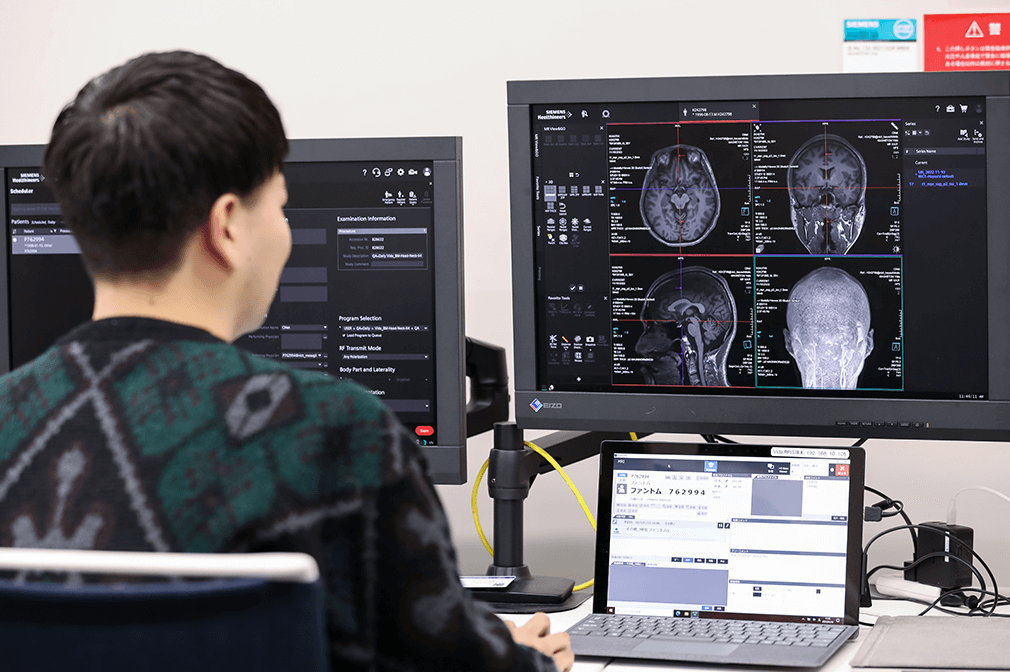
Uncovering
Neural Correlates
Through psychophysical and neuroimaging experiments, we clarify the neural basis of perception and cognition. Recently, we have been studying the neural mechanisms of temporal and numerical processing, with particular focus on their neural representations and its relationship with our percepts. In the future, I would like to deepen these researches, and also to study how the way information is represented constrains human thoughts and language.
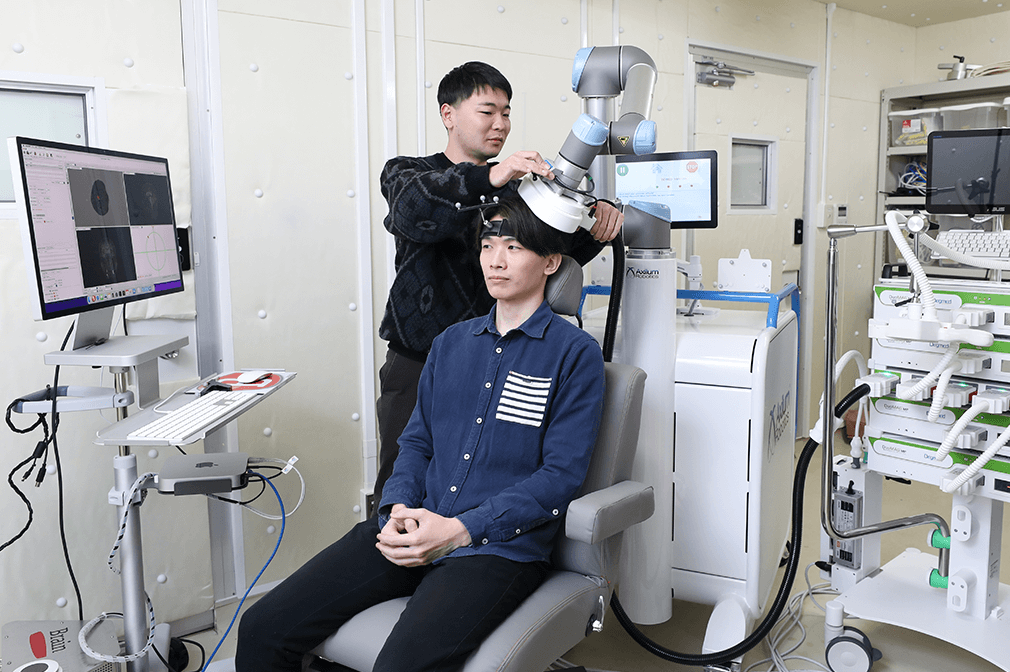
Revealing
Causal Relationships
A weakness of neuroimaging techniques is that while it can reveal the correlation between perception / cognition and brain activity, it cannot reveal the causal relationship between them. Therefore, we use techniques such as transcranial magnetic stimulation (TMS, tSMS) and transcranial electrical stimulation (tDCS, tACS) techniques, which can stimulate the brain non-invasively, to temporarily modulate neural activity and clarify the causal relationship between brain activity and perception / cognition. Currently, we are mainly investigating how the perception of time and number is modulated by brain stimulation.
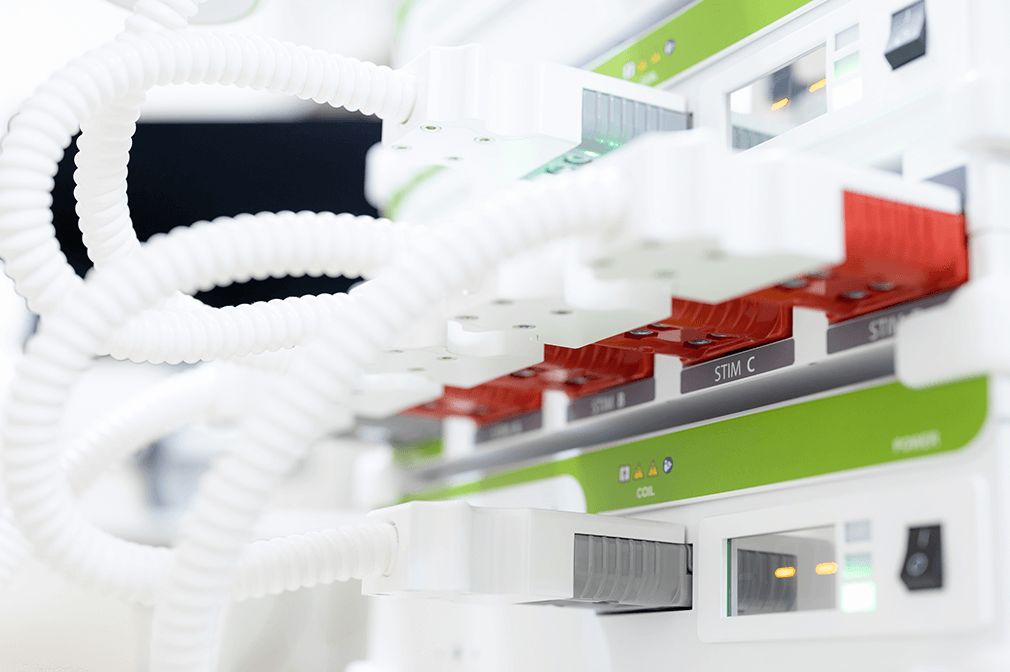
Augmenting
Human Abilities
Based on the knowledge obtained from psychophysical experiments, neuroimaging, and brain stimulation experiments, we will develop technologies that can improve human perception and cognitive abilities and control them at will. To achieve this goal, we combine wearable devices which allows us to collect external and internal biological information, machine learning techniques, and sensory and brain stimulation methods. In the future, we further expand this idea to develop a new technology that helps us to acquire new abilities that humans have never had before, and to implement it in society.
PUBLICATIONS
Papers
- Sugimoto M, Kimura I, Hayashi MJ (2025) Transcranial static magnetic stimulation dissociates the causal roles of the parietal cortex in spatial and temporal processing. bioRxiv. [Full text]
- Sakamoto Y, Hayashi MJ (2025) Contextual scaling of representational uncertainty for size and number. bioRxiv. [Full text]
- Kido T, Yotsumoto Y, Hayashi MJ (2025) Hierarchical representations of relative numerical magnitudes in the human frontoparietal cortex. Nature Communications, 16:419. [PubMed] [Full text] [Press Release]
- Kimura I, Hayashi MJ, Amano K (2024) Immediate effect of quadri-pulse stimulation on human brain microstructures and functions. Imaging Neuroscience, 2: 1–15. [PubMed] [Full text]
- Protopapa F, Kulashekhar S, Hayashi MJ, Kanai R, Bueti D (2023) Effective connectivity in a duration selective cortico-cerebellar network. Scientific Reports, 13:20674. [PubMed] [Full text]
- Gallego Hiroyasu EM, Laje R, Nomura K, Spiousas I, Hayashi MJ, Yotsumoto Y (2023) Longitudinal analysis of social isolation effects on finger tapping in the Blursday database. Scientific Reports, 13:11277. [PubMed] [Full text]
- Li L, Yotsumoto Y, Hayashi MJ (2022) Temporal perceptual learning distinguishes between empty and filled intervals. Scientific Reports, 12: 9824. [PubMed] [Full text]
- Kimura I, Ugawa Y, Hayashi MJ*, Amano K* (2022) Quadripulse stimulation: A replication study with a newly developed stimulator. Brain Stimulation, 15(3): 579-581. *Equal contribution. [PubMed] [Full text]
- Kawashima T, Hayashi MJ, Amano K (2022) Attentional rhythmic blink: Theta/Alpha balance in neural oscillations determines the rhythmicity in visual sampling. bioRxiv. [Full text]
- Kimura I, Oishi H, Hayashi MJ*, Amano K* (2022) Microstructural properties of human brain revealed by fractional anisotropy can predict the after-effect of intermittent theta burst stimulation. Cerebral Cortex Communications, 3(1): tgab065. *Equal contribution. [PubMed] [Full text]
- Sugiyama S, Gallego-Hiroyasu EM, Nomura K, Hayashi MJ, Yotsumoto Y (2021) Longitudinal evaluation of the impact of the COVID-19-associated confinement on loneliness, anxiety, and sleep in a Japanese population. The Japanese Journal of Psychology, 92(5): 397-407. (Japanese) [Full text]
- Hayashi MJ, Ivry RB (2020) Duration selectivity in right parietal cortex reflects the subjective experience of time. Journal of Neuroscience, 40(40): 7749-7758. [PubMed] [Full text] [Covered in Nature as "Research Highlight"]
- Protopapa F, Hayashi MJ, Kulashekhar S, van der Zwaag W, Battistella G, Murray MM, Kanai R, Bueti D (2019) Chronotopic maps in human supplementary motor area. PLoS Biology, 17(3): e3000026. [PubMed] [Full text] [Recommended in Faculty Opinions]
- Hayashi MJ, van der Zwaag W, Bueti D, Kanai R (2018) Representations of time in human frontoparietal cortex. Communications Biology, 1(1): 233. [PubMed] [Full text]
- Kanaya S, Hayashi MJ, Whitney D (2018) Exaggerated groups: Amplification in ensemble coding of temporal and spatial features. Proceedings of the Royal Society B, 285(1879). [PubMed] [Full text]
- Okamoto Y, Kosaka H, Kitada R, Seki A, Tanabe HC, Hayashi MJ, Kochiyama T, Saito DN, Yanaka HT, Munesue T, Ishitobi M, Omori M, Wada Y, Okazawa H, Koeda T, and Sadato N (2017) Age-dependent abnormalities in body- and face-sensitive activation of the EBA and FFA in individuals with ASD. Neuroscience Research, 119: 38-52. [PubMed] [Full text]
- Hayashi MJ, Ditye T, Harada T, Hashiguchi M, Sadato N, Carlson S, Walsh V, Kanai R (2015) Time adaptation shows duration selectivity in the human parietal cortex. PLoS Biology, 13(9): e1002262. [PubMed] [Full text]
- Okamoto Y, Kitada R, Tanabe HC, Hayashi MJ, Kochiyama T, Munesue T, Ishitobi M, Saito DN, Yanaka HT, Omori M, Wada Y, Okazawa H, Sasaki AT, Morita T, Itakura S, Kosaka H, Sadato N (2014) Attenuation of the contingency detection effect in the extrastriate body area in Autism Spectrum Disorder. Neuroscience Research, 87: 66-76. [PubMed] [Full text]
- Hayashi MJ, Kantele M, Walsh V, Carlson S, Kanai R (2014) Dissociable neuroanatomical correlates of subsecond and suprasecond time perception. Journal of Cognitive Neuroscience, 26(8): 1685-1693. [PubMed] [Full text]
- Yoshida Y, Tanabe HC, Hayashi MJ, Kawamichi H, Kochiyama T, Sadato N (2013) The neural substrates of the warning effect: A functional magnetic resonance imaging study. Neuroscience Research, 76(4): 230-239. [PubMed] [Full text]
- Sakai H, Uchiyama Y, Shin D, Hayashi MJ, Sadato N (2013) Neural activity changes associated with impulsive responding in the sustained attention to response task. PLoS One, 8(6): e67391. [PubMed] [Full text]
- Hayashi MJ, Valli A, Carlson S (2013) Numerical quantity affects time estimation in the suprasecond range. Neuroscience Letters, 543: 7-11. [PubMed] [Full text]
- Hayashi MJ, Kanai R, Tanabe HC, Yoshida Y, Carlson S, Walsh V, Sadato N (2013) Interaction of numerosity and time in prefrontal and parietal cortex. Journal of Neuroscience, 33(3): 883-893. [PubMed] [Full text]
- Tanabe HC*, Kosaka H*, Saito DN, Koike T, Hayashi MJ, Izuma K, Komeda H, Ishitobi M, Omori M, Munesue T, Okazawa H, Wada Y, Sadato N (2012) Hard to “tune in”: neural mechanisms of eye contact and joint attention in high-functioning autistic spectrum disorder. Frontiers in Human Neuroscience, 6: 268. *Equal contribution. [PubMed] [Full text]
- Saito DN*, Tanabe HC*, Izuma K, Hayashi MJ, Morito Y, Komeda H, Uchiyama H, Kosaka H, Okazawa H, Fujibayashi Y, Sadato N (2010) “Stay-tuned”: inter-individual neural synchronization during gaze and joint attention. Frontiers in Integrative Neuroscience, 4: 127. *Equal contribution. [PubMed] [Full text]
- Hayashi MJ, Saito DN, Aramaki Y, Asai T, Fujibayashi Y, Sadato N (2008) Hemispheric asymmetry of frequency-dependent suppression in the ipsilateral primary motor cortex during finger movement: A functional magnetic resonance imaging study. Cerebral Cortex, 18(12): 2932-2940. [PubMed] [Full text]
Conference Papers
- Kawashima T, Shibusawa S, Hayashi MJ, Ikeda T, Tanaka S (2023) Recent advances in brain stimulation techniques: The interface with cognitive psychology. The Japanese Journal of Cognitive Psychology, 20(2): 91-101. (Japanese) [Full text]
Misc
- Hayashi MJ. 脳は数をどう捉えるか──相対的な数の大きさの脳内表現. 科学(Iwanami Shoten) 95(9), Sep 2025. (Japanese)
- Hayashi MJ. 時間感覚の文脈依存性とその神経機構. Clinical Neuroscience(Chugai-igakusha) 41(8), Aug 2023. (Japanese)
- Hayashi MJ. Q&A–神経科学の素朴な疑問. Clinical Neuroscience(Chugai-igakusha) 40(2), Feb 2022. (Japanese)
- Hayashi MJ. 素顔のニューロサイエンティスト. Clinical Neuroscience(Chugai-igakusha) 36(124), Jan 2018. (Japanese)
- Hayashi MJ. Brain mechanisms for measuring time: Population coding of durations. Brain Nerve(Igaku-shoin) 68(11), Nov 2016. (Japanese)
- Hayashi MJ. 時間感覚を担う脳領域. Clinical Neuroscience(Chugai-igakusha) 33, May 2015. (Japanese)
FACILITIES
COMMON FACILITIES
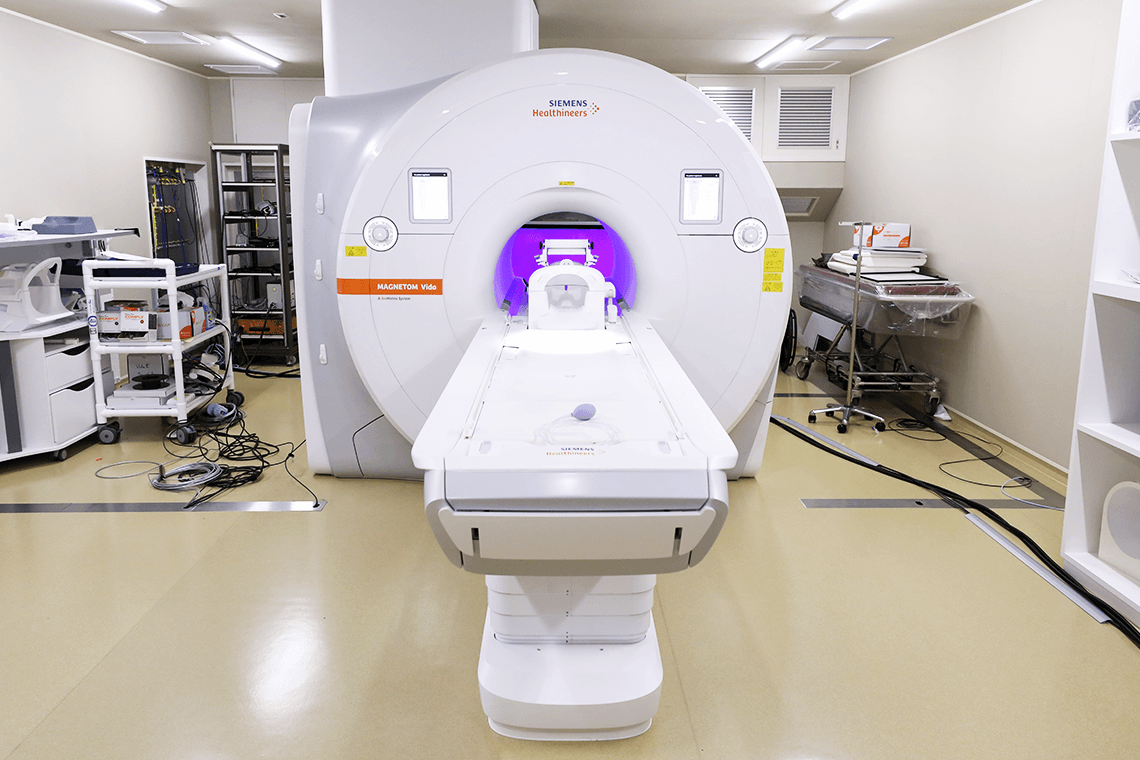
Magnetic Resonance Imaging
Siemens MAGNETOM Prisma, PrismaFit, Vida (3 Tesla)
Siemens MAGNETOM Terra(7 Tesla)
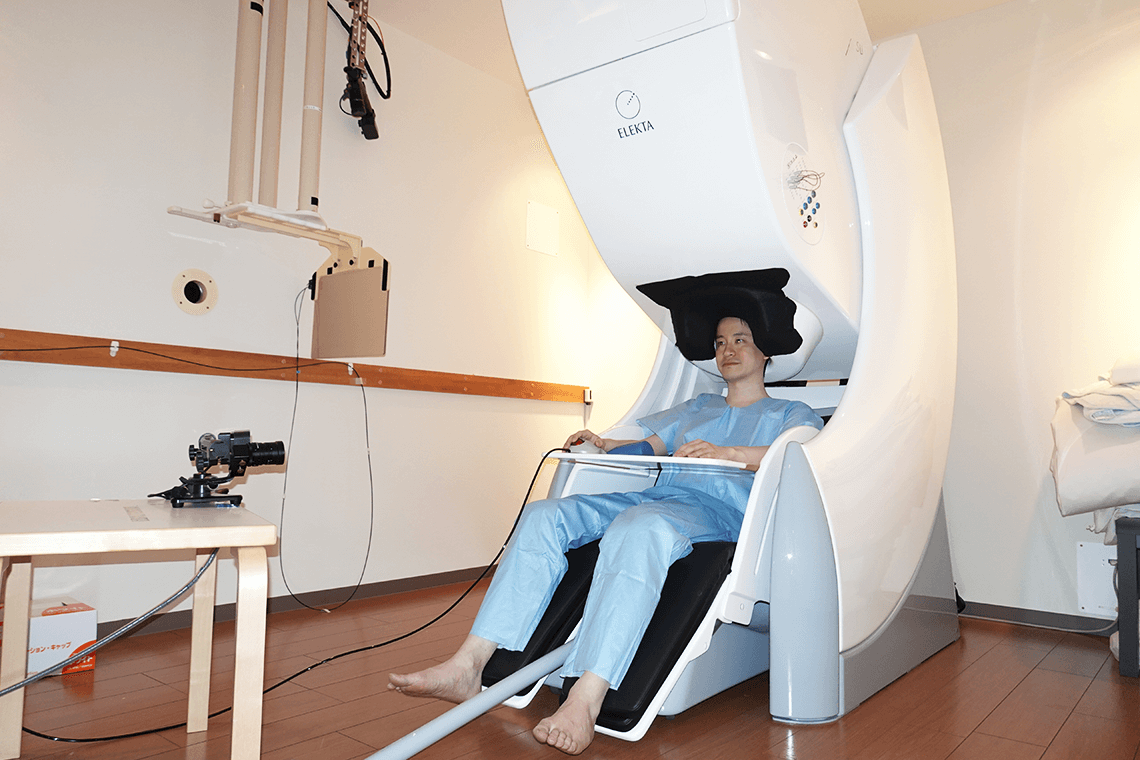
Magnetoencephalography
Elekta Neuromag 360-channel MEG System
LAB FACILITIES
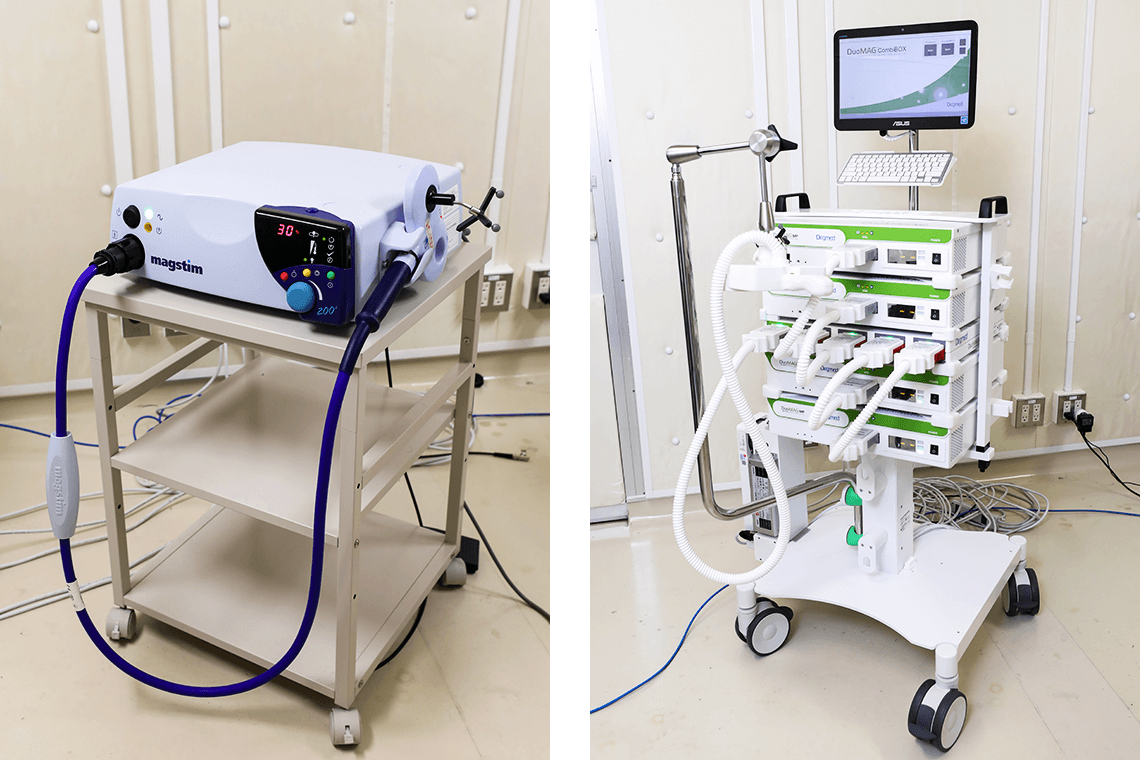
Transcracial Magnetic Stimulation
Magstim 2002, BiStim2
Deymed DuoMAG MP-Quad
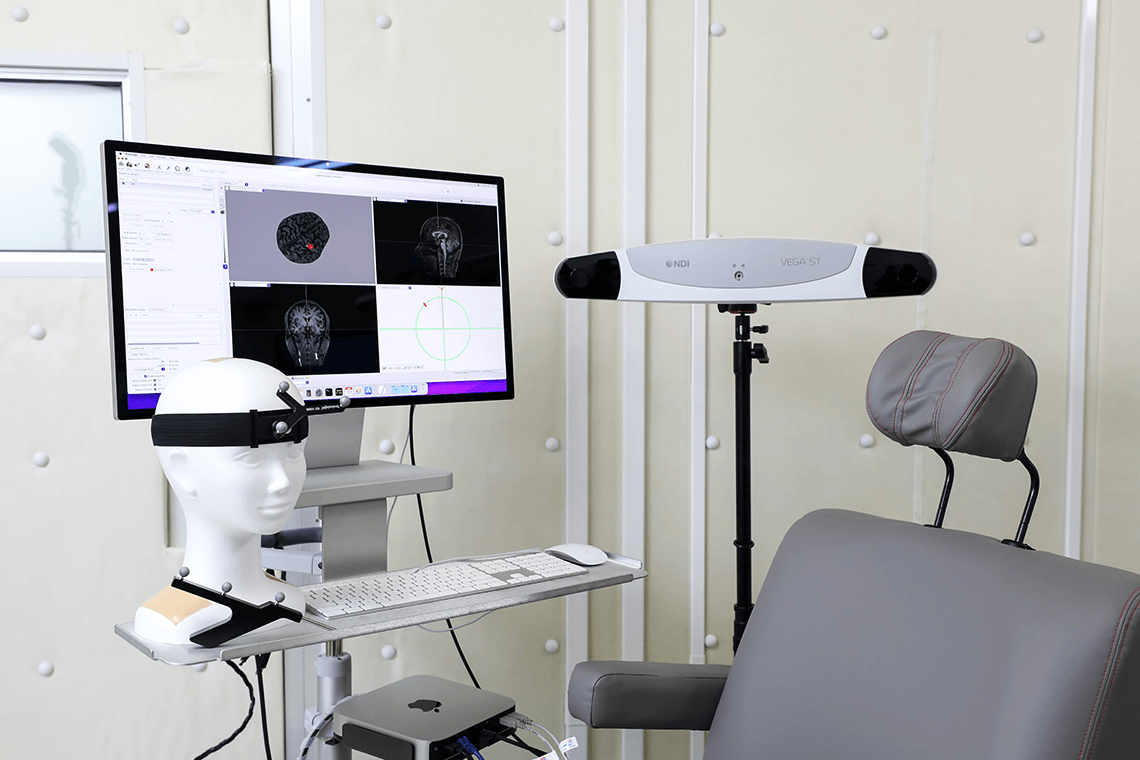
TMS Navigation System
Rogue Research Brainsight
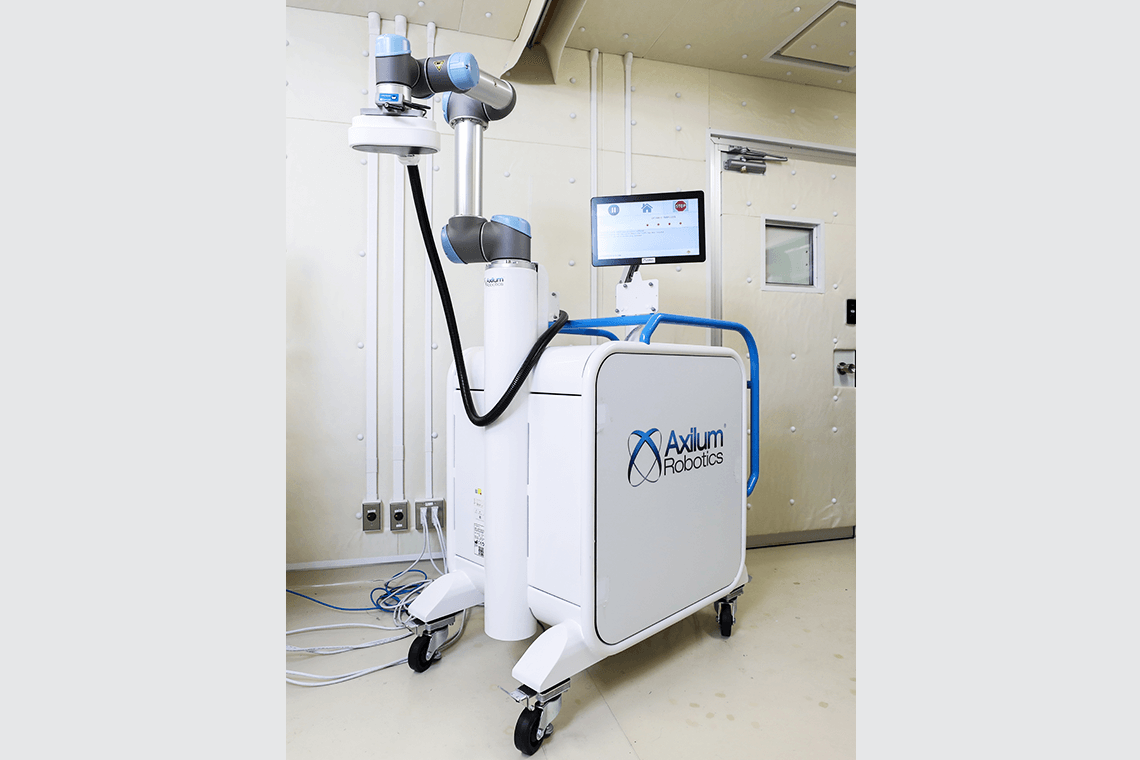
TMS Cobot
Axilum TMS-Cobot
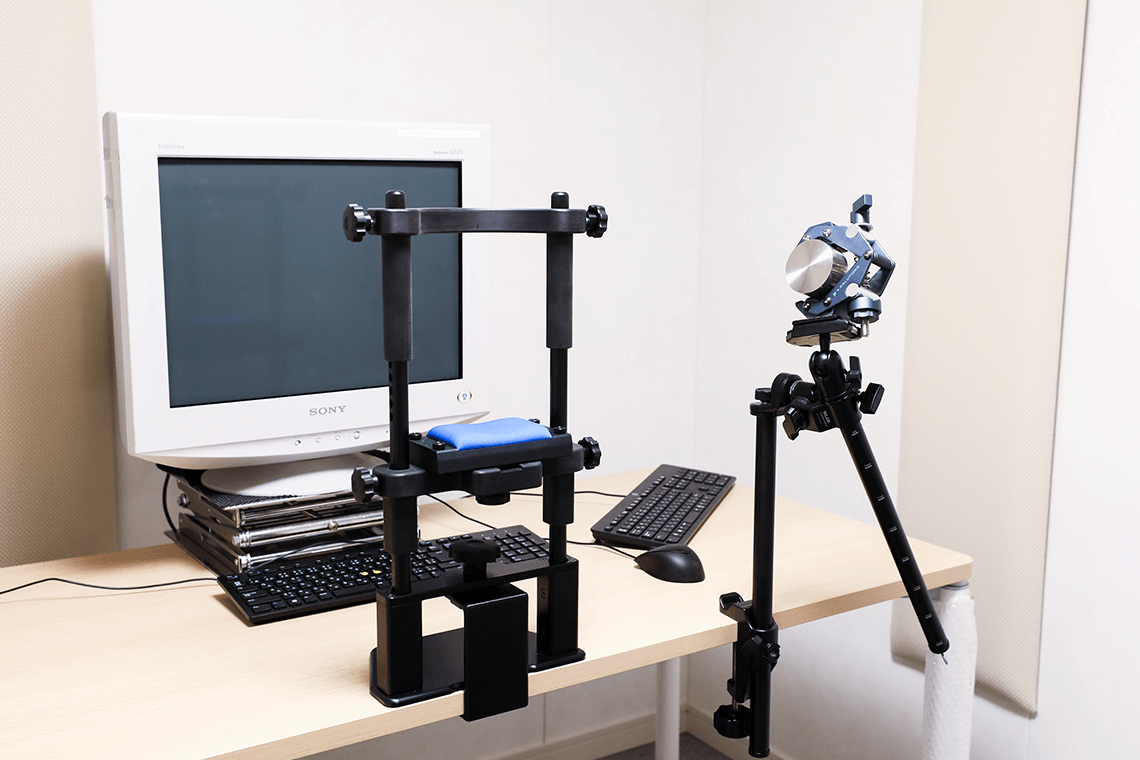
Transcranial Static Magnetic Stimulation
Neurek MAG45r+, MAG50r+
Transcranial electrical stimulation (tDCS/tACS) devices, an electroencephalography (EEG) system, eye trackers, and sound-proof experimental rooms are also available.
TEAM
Researcher
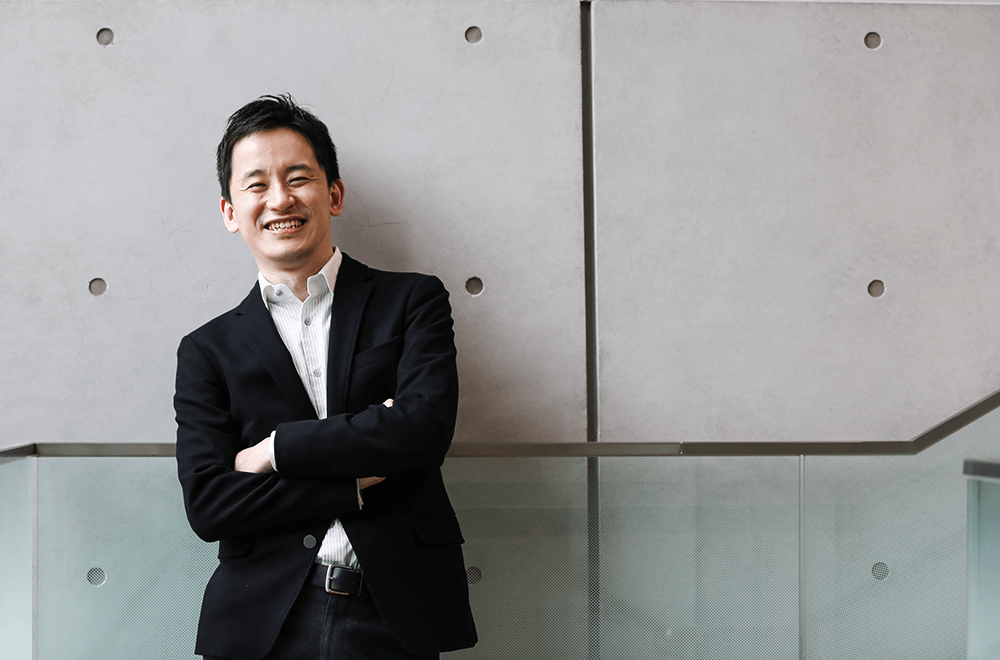
Masamichi HAYASHI, Ph.D.
Principal Investigator
Senior Researcher, CiNet
Guest Associate Professor, Graduate School of Frontier Biosciences, The University of Osaka
- perception of time and space
- subjectivity
- efficient coding
- human augmentation
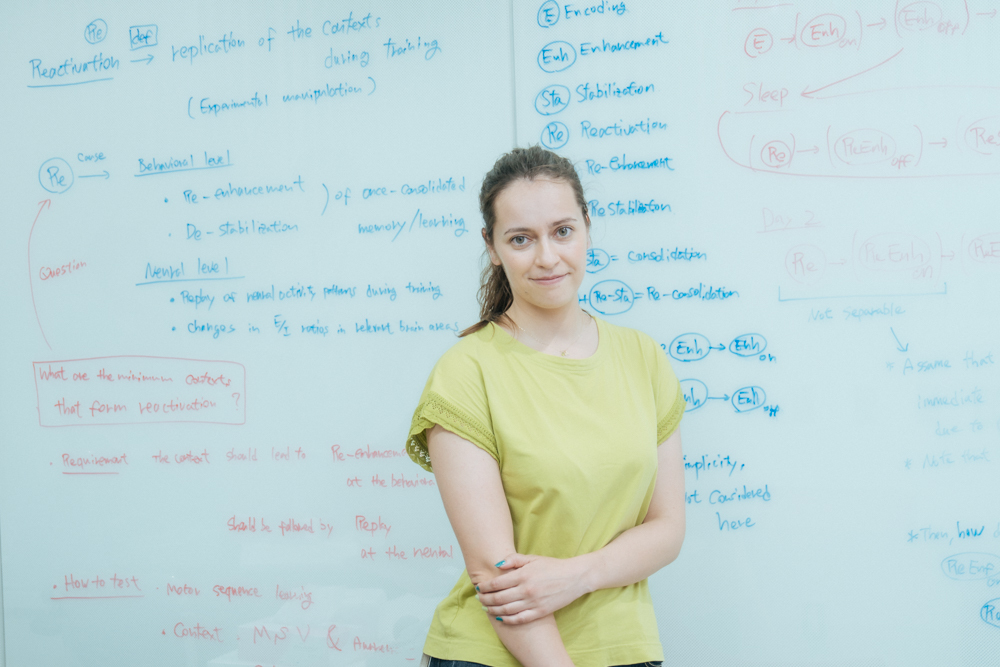
Sofia NAGISA, Ph.D.
Fixed-term Researcher, CiNet
Visiting Researcher, RIKEN Center for Brain Science
- vision
- time perception
- effort
- vigilance
- psychophysics
Cooperative Visiting Researcher
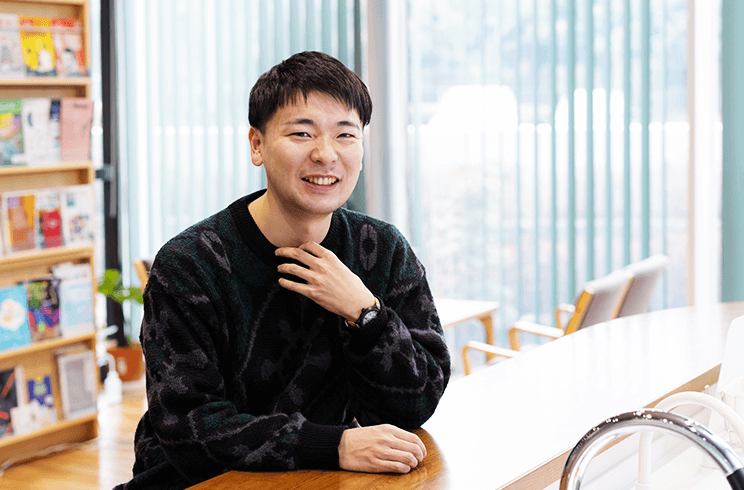
Masakazu SUGIMOTO
Cooperative Visiting Researcher, CiNet
Graduate Student, Graduate School of Frontier Biosciences, The University of Osaka
JSPS Research Fellow (DC2)
- brain stimulation
- MRI
- time perception
- cognitive neuroscience
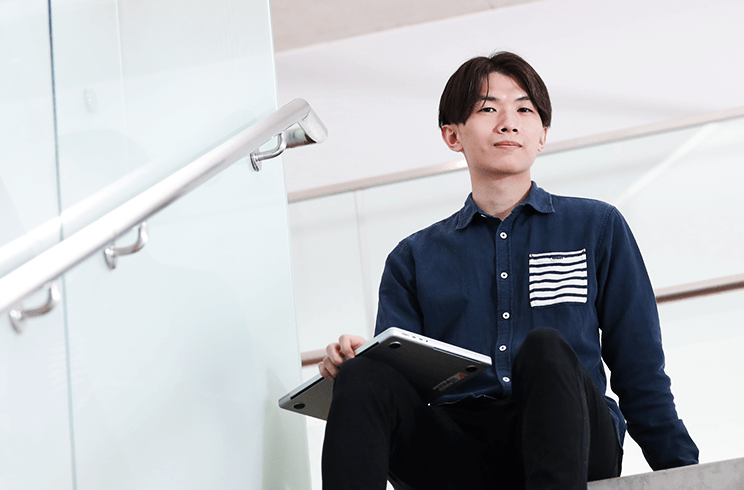
Ryo KANECHI
Cooperative Visiting Researcher, CiNet
Graduate Student, Graduate School of Frontier Biosciences, The University of Osaka
Fellowship Student, Next Generation Researcher Development Project
- duration perception
- temporal resolution
- psychophysics
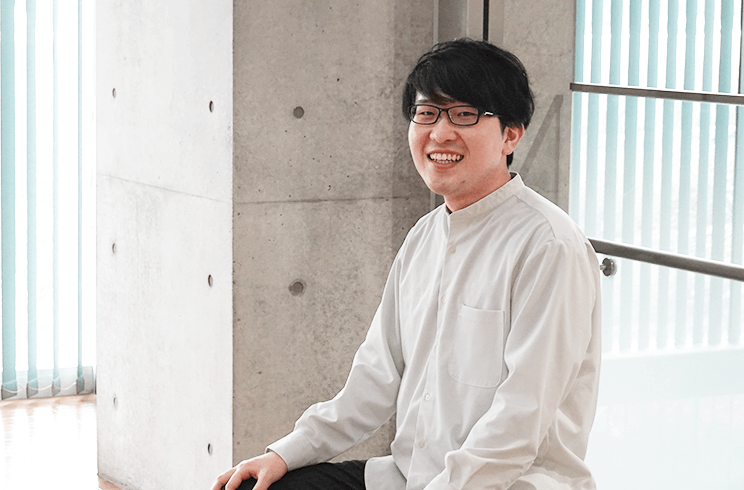
Tomoki TAKAHASHI
Cooperative Visiting Researcher, CiNet
Graduate Student, Graduate School of Frontier Biosciences, The University of Osaka
Fellowship Student, Next Generation Researcher Development Project
- numerosity perception
- synesthesia
- multisensory integration

DAI Zerui
Cooperative Visiting Researcher, CiNet
Graduate Student, Graduate School of Frontier Biosciences, The University of Osaka
- time perception
- linguistics
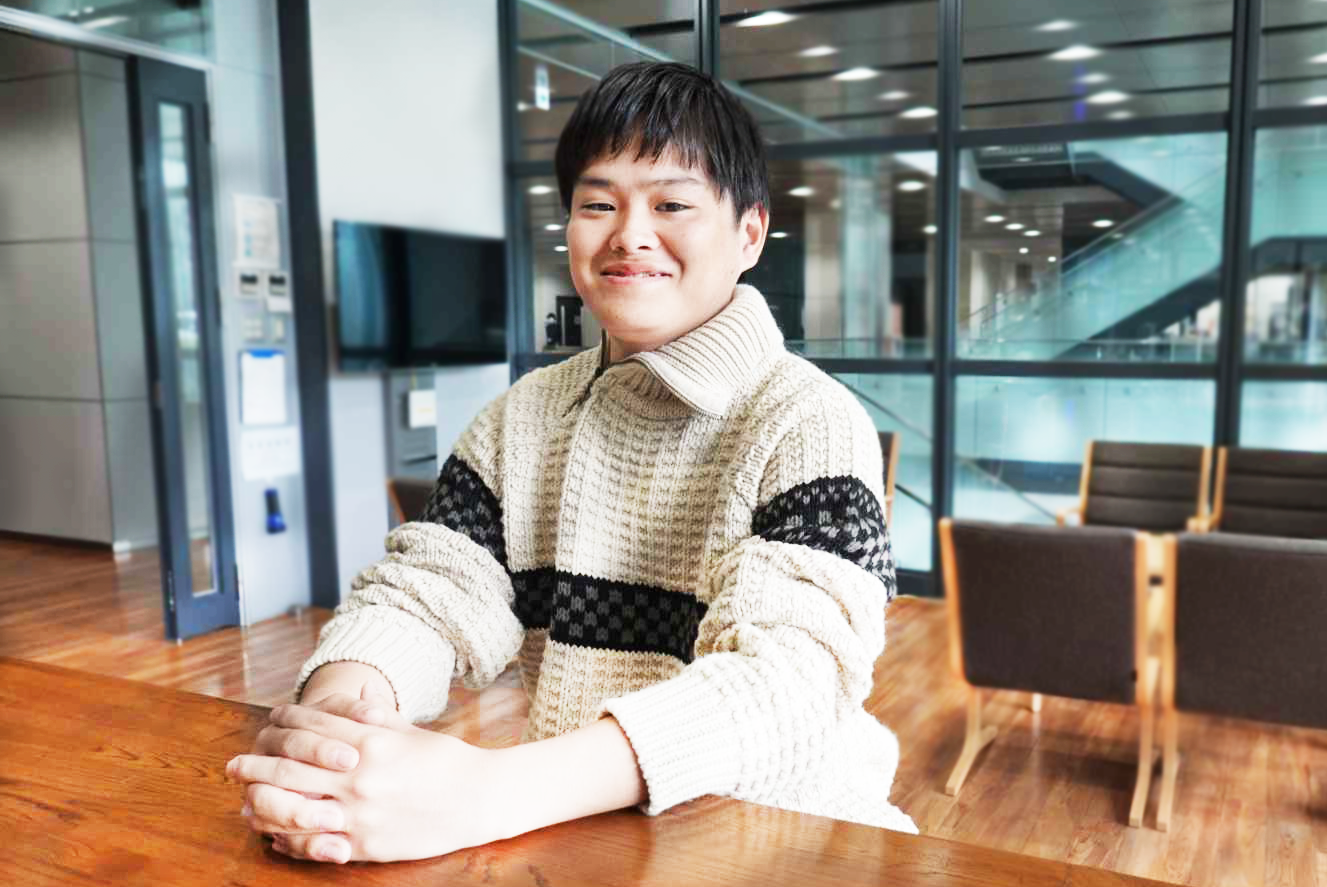
Minto HASHIMOTO
Cooperative Visiting Researcher, CiNet
Graduate Student, Graduate School of Frontier Biosciences, The University of Osaka
- window of simultaneity
- time perception
- visual Perception

Naoya SUGIMOTO
Cooperative Visiting Researcher, CiNet
Graduate Student, Graduate School of Frontier Biosciences, The University of Osaka
- time perception
- cognitive neuroscience
- MRI
Assistant Staff
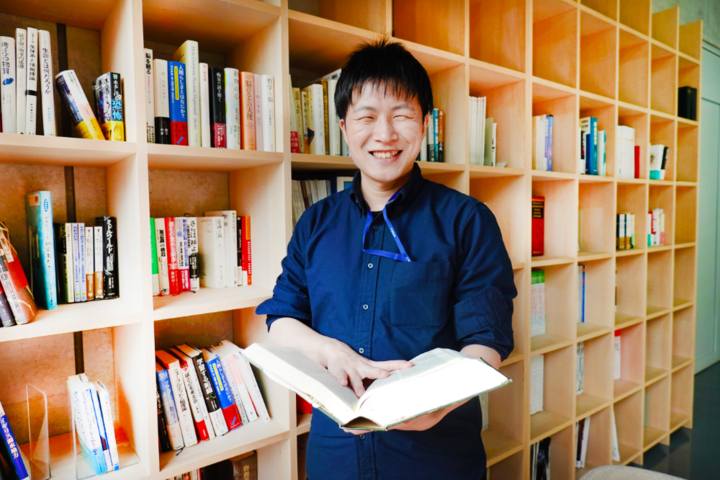
Ken ISOSAKI
Technical Staff
Systems Engineer, Media-X Co.,Ltd.
- Java
- corporate accounting
- shogi

Keiko SAWAI
Administrative Specialist
- rabbit
- camera
Collaborator
Yosuke SAKAMOTO
Graduate Student
The University of Osaka
Natsuki UEDA
JSPS Postdoctoral Research Fellow
National Center of Neurology and Psychiatry
Ankit MAURYA
Graduate Student
Indian Institute of Technology Roorkee
Neil ROACH
Professor
University of Nottingham
Mitsunari ABE
Manager
National Center of Neurology and Psychiatry
Tony THOMAS
Assistant Professor
Indian Institute of Technology Roorkee
Tsukasa KIMURA
Assistant Professor
The University of Osaka
Teruaki KIDO
Postdoctoral Research Associate
Brown University
Ikko KIMURA
Postdoctoral Researcher
Danish Research Centre for Magnetic Resonance
Yuko YOTSUMOTO
Professor
The University of Tokyo
Alumni
Ryohei OBATA
Technical Staff
Jul 2023 – Mar 2025
Yukari TAKUWA
Administrative Specialist
Sep 2023 – Nov 2024
Kohhei HOSOYA
Graduate Student
Apr 2021 – Mar 2024
Natsuha FUJIHARA
Administrative Specialist
Sep 2019 – Jul 2023
Masaki TERANISHI
Intern
Mar 2023
Noah NAKANISHI
Intern
Feb 2023 – Mar 2023
Naoto ICHIKAWA
Technical Staff
Nov 2022 – Mar 2023
Shihomi KAWASAKI
Technical Staff
Jun 2022 – Mar 2023
VACANCIES
There are several funding opportunities available for prospective PhD students and postdocs. Intern students from foreign countries are also welcomed. If you are interested in joining our team, please feel free to contact us! For the funding opportunities, please refer to this page.
For more information, please contact: m.hayashi[at]nict.go.jp
ACCESS
CONTACT
Center for Information and Neural Networks
1-4 Yamadaoka, Suita City, Osaka, 565-0871
E-mail:m.hayashi[at]nict.go.jp
See here for directions to CiNet from Kansai International
Airport